Baseball

Baseball Batting
In baseball, batting is the act of facing the opposing pitcher and trying to produce offense for one's team. A batter or hitter is a person whose turn it is to face the pitcher. The three main goals of batters are to become a baserunner, drive runners home, or advance runners along the bases for others to drive home, but the techniques and strategies they use to do so vary. Hitting uses a motion that is virtually unique to baseball, one that is rarely used in other sports. Hitting is unique because unlike most sports movements in the vertical plane of movement hitting involves rotating in the horizontal plane.
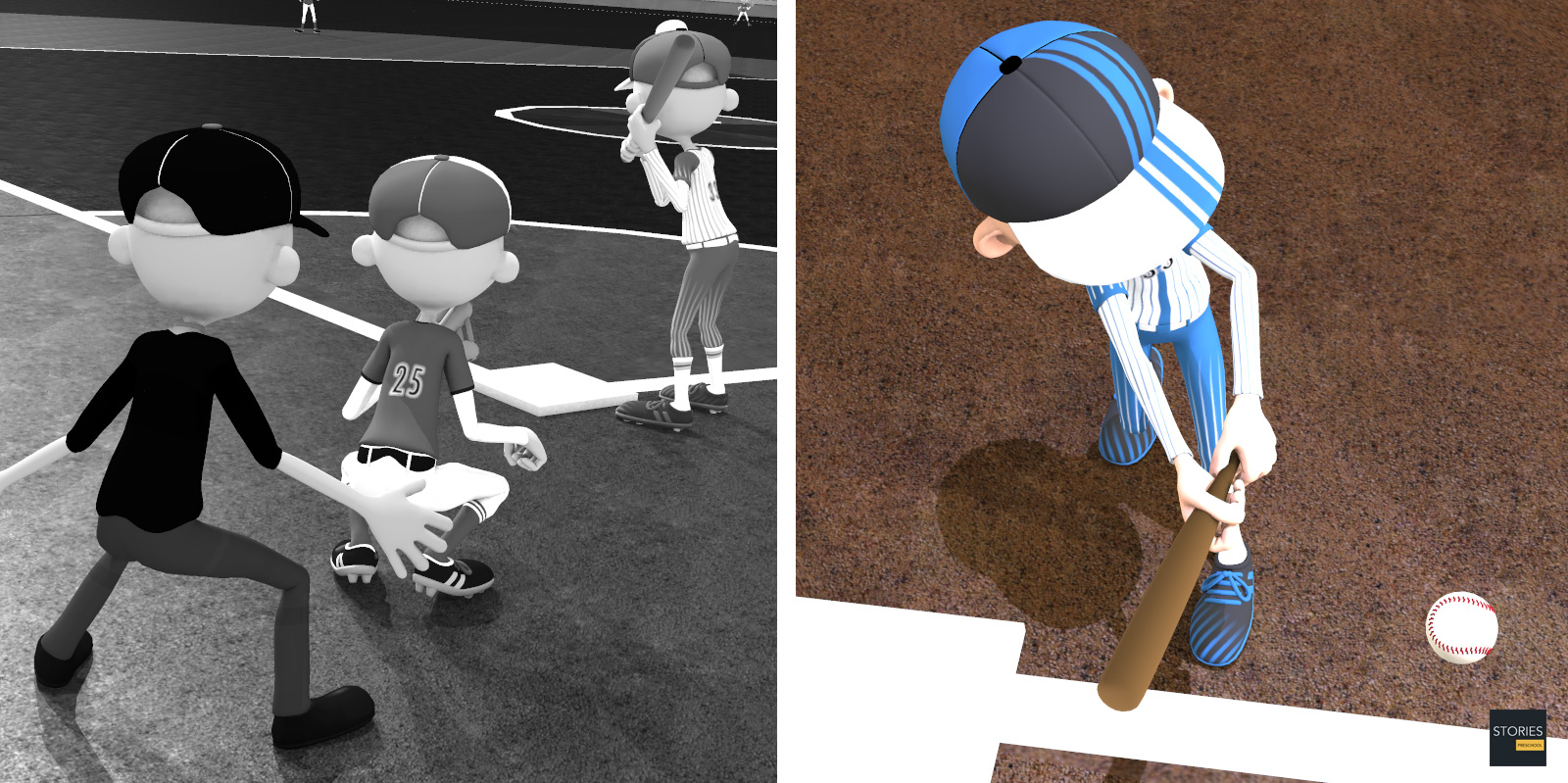
Goals
In general, batters try to get hits. However, their primary objective is to avoid making an out, and helping their team to score runs. There are several ways they can help their team score runs. They may draw a walk if they receive and do not swing the bat at four pitches located outside the strike zone. In cases when there is a runner on third and fewer than two outs, they can attempt to hit a sacrifice fly to drive the runner in by allowing the runner on third to tag up and score. When there are fewer than two outs and runners on base, they can try to sacrifice bunt to advance the runner(s) or, with a runner on first or with runners on first and third, they can try a hit and run play, also designed to advance the runner(s). They might even be hit by a pitch, reach on an error or—if first is empty or there are two outs—on a dropped third strike.
- A single is the most common type of base hit, accomplished through the act of a batter safely reaching first base by hitting a fair ball (thus becoming a runner) and getting to first base before a fielder puts him out.
- A double is the act of a batter striking the pitched ball and safely reaching second base without being called out by the umpire, without the benefit of a fielder's misplay or another runner being put out on a fielder's choice.
- A triple is the act of a batter safely reaching third base after hitting the ball.
- A grand slam is a home run hit with all three bases occupied by baserunners ("bases loaded"), thereby scoring four runs—the most possible in one play.
The defense attempts to get the batter out. The pitcher's main role in this is to throw the ball in such a way that the batter either strikes out or cannot hit it cleanly so that the defense can get him or her out.
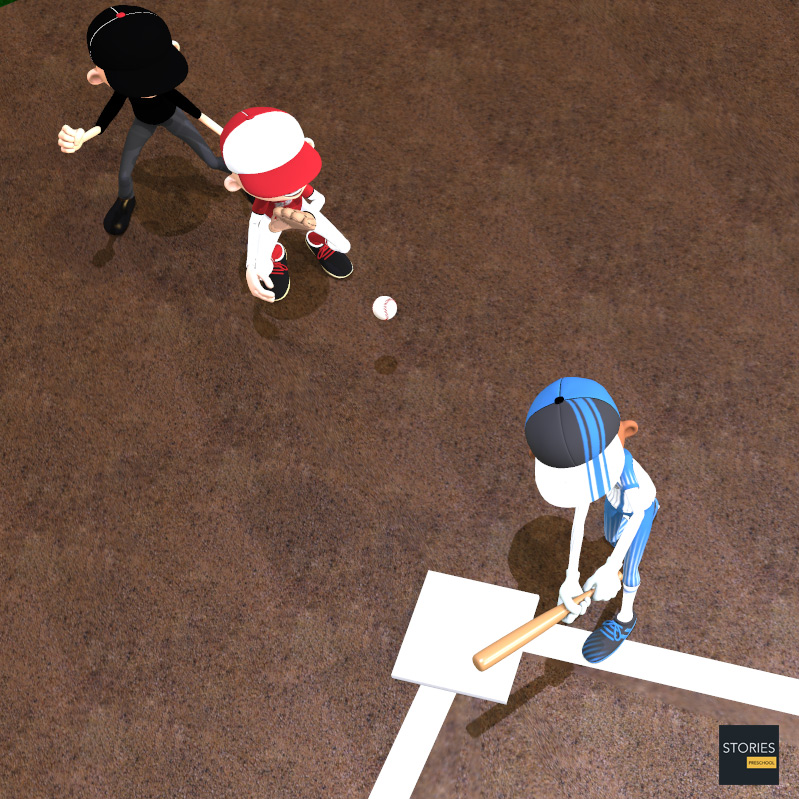
Batting is often cited as one of the most difficult feats in sports because it consists of hitting a small round ball, usually moving at high velocity, with a thin round bat. In fact, if a batter can get a hit in three out of ten at bats, giving him a batting average of .300 (pronounced "three hundred"), he or she is considered a good hitter.
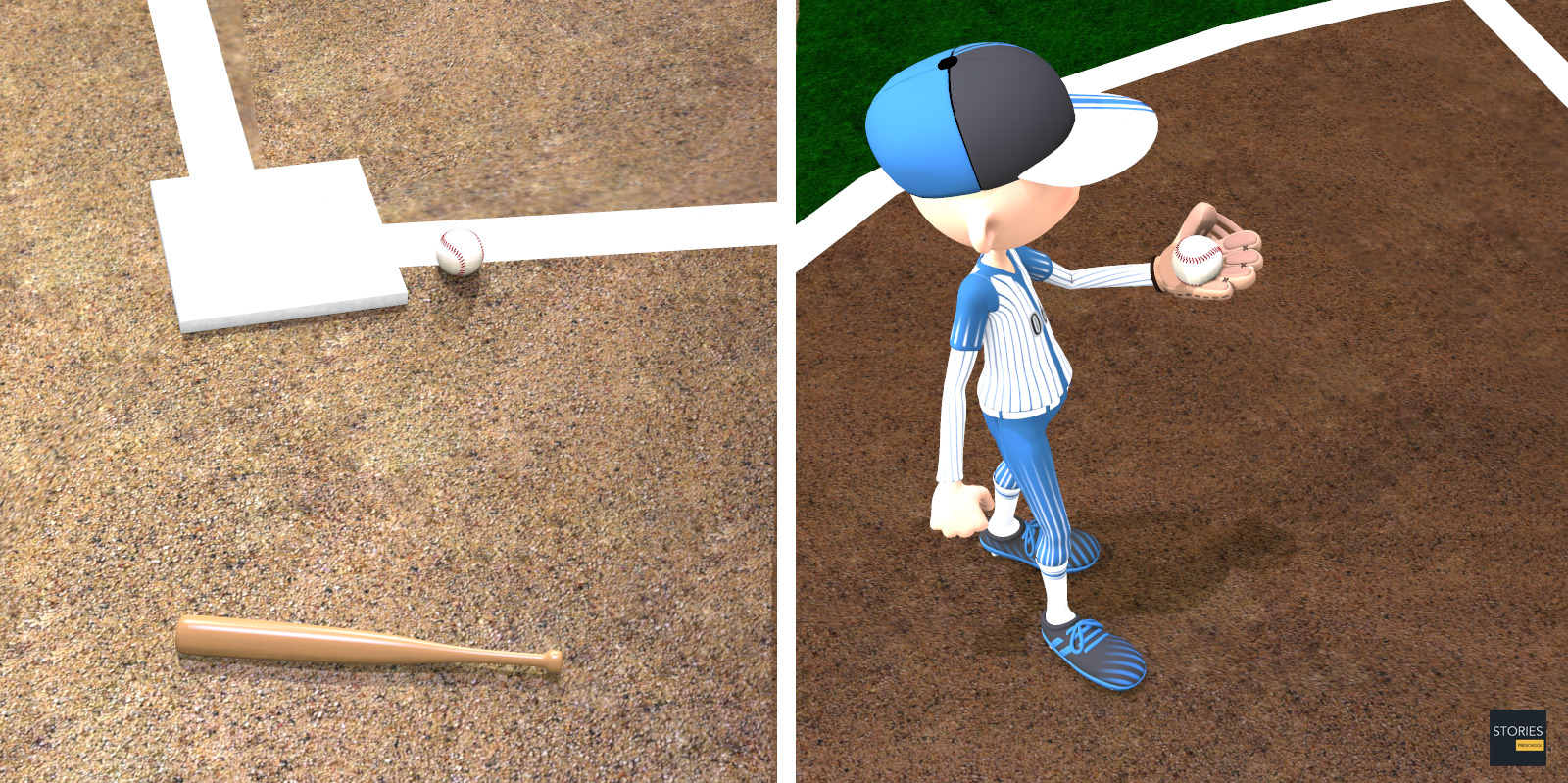
In Major League Baseball, no batter has had over a .400 average at the end of the season since Ted Williams in 1941, and no batter has ever hit over .367 in a lifetime—Ty Cobb hit .3664. In modern times, the statistic on-base plus slugging (OPS) is seen as a more accurate measure of a player's ability as a batter; this stat combines the player's on-base percentage (a percentage of their plate appearances where the batter gets on base), with the player's slugging percentage (an average of total bases with at-bats). An OPS at or near 1.000 is considered to be the mark of an exceptional hitter. A sustained OPS at or above 1.000 over a career is a feat only a few hitters have ever been able to reach.
Strategy
Batters vary in their approach at the plate. Some are aggressive hitters, often swinging at the first pitch (as pitchers often attempt to throw a first-pitch strike). Others are patient, attempting to work the pitch count in order to observe all the types of pitches a pitcher will use, as well as tire out the pitcher by forcing him to throw many pitches early. Generally, contact hitters are more aggressive, swinging at pitches within the strike zone, whereas power hitters will lay off borderline strikes in order to get a pitch they can drive for extra bases.
In baseball and softball, the count refers to the number of balls and strikes a batter has in his current plate appearance.
Warming Up
In preparation of hitting, every baseball player has their own particular warm-up routine. There are various hitting devices used during warm up in the "on deck circle" to try and increase the batter's bat velocity. The over weighted supplemental devices include swinging multiple bats, Schutt Dirx (96 oz), Pitcher's Nightmare, Power Fin (14 oz), Standard 23 oz softball bat, heavier 26 oz softball bat, lighter 18 oz softball bat and Doughnut ring (16 oz).
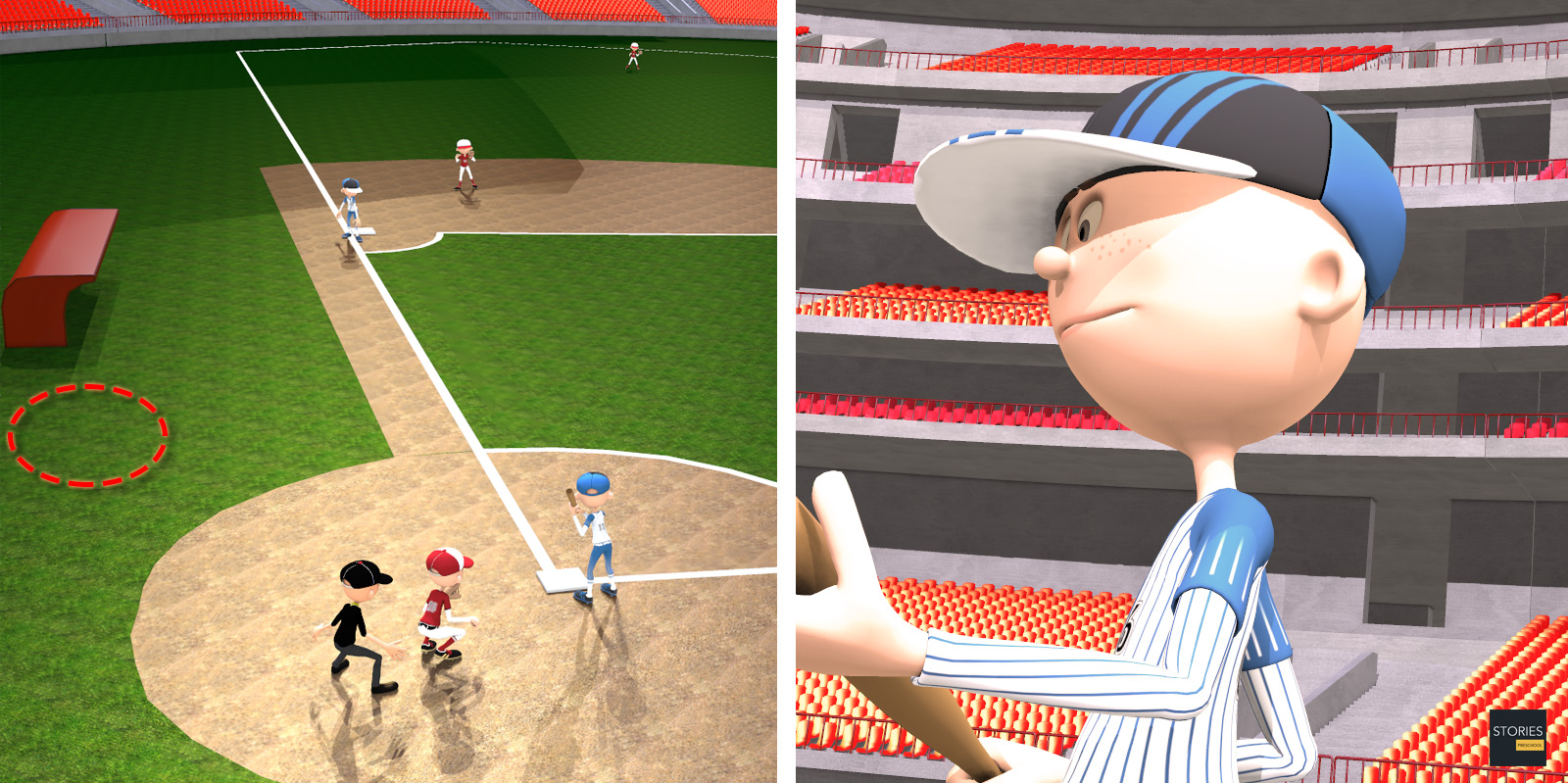
Weighted warm-up devices are commonly used because players feel that warming-up with heavier bats will help them increase bat velocity because after the warm-up with a heavier bat, the normal bat feels lighter and they feel they could swing it faster. The effect of these devices is not only mental, but it may also be physical.
Heavy warm up loads stimulate the neural system, allowing for increased muscle activation during lighter bat swings. The use of weighted bats is based on the theory of complex training where sets of heavier and lighter resistances are alternated to increase muscle performance. This theory revolves around the idea that muscle contractions are stronger after reaching near maximal contractions. The post activation potentiation improves motor neuron pool excitability and increases the number of recruited motor units, both leading to greater power output. The additional weight may also help strengthen the muscles of the forearms and wrist thus increasing bat velocity.
The Lineup
The lineup or batting order is a list of the nine baseball players for a team in the order they will bat during the game. During the game the only way to change the lineup is via substitution, as batting out of turn is not allowed. Once the ninth person in the lineup finishes batting, the first person bats again; this is the top of the order. Lineups are designed to facilitate manufacturing runs. Depending on batters' skills, they might be placed in different parts of the lineup. Of course, when it comes down to it, all batters are attempting to create runs for the team.
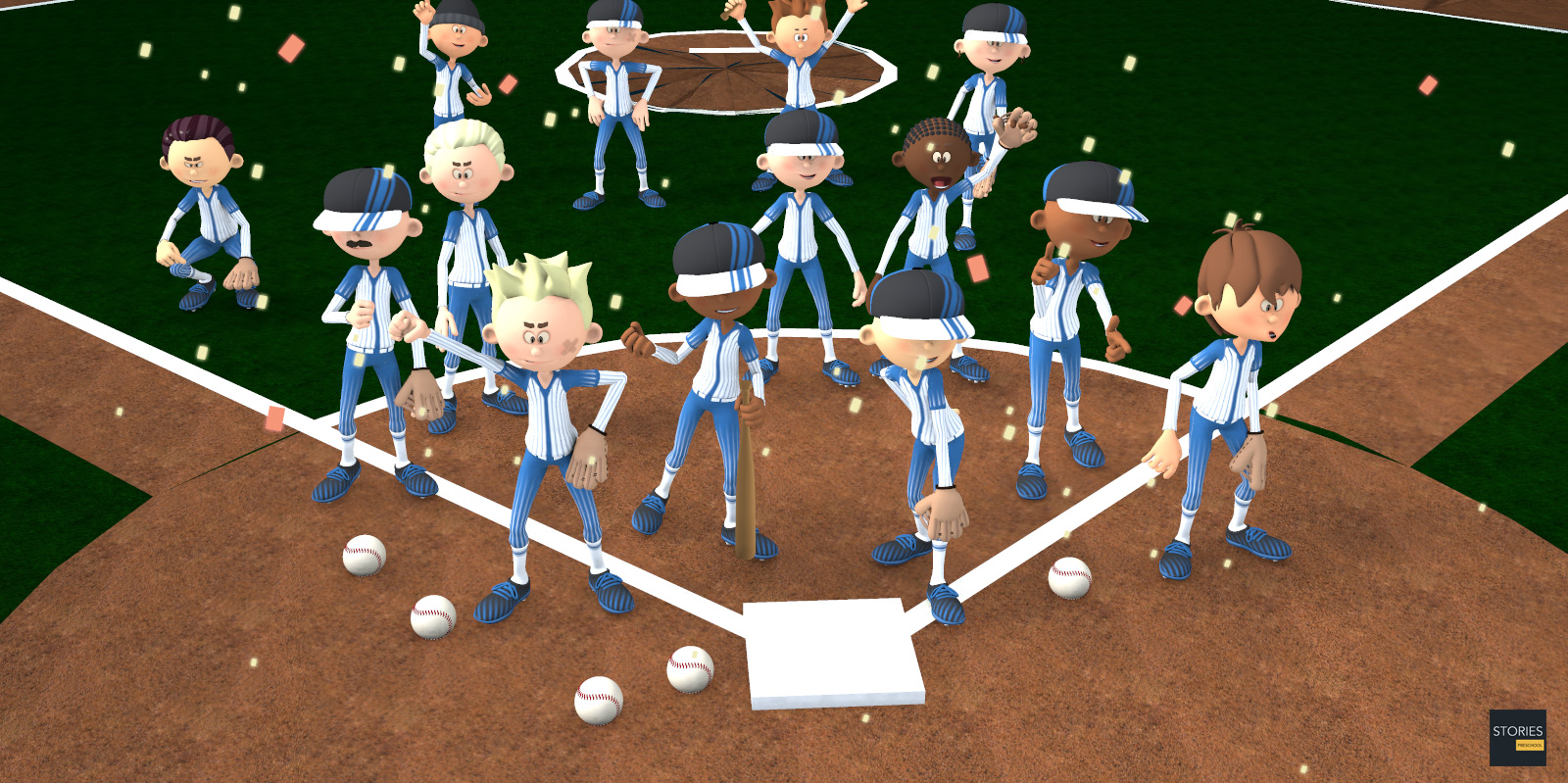
The player currently batting in a game is said to be at the plate, at bat, or up to bat (shortened to up). To keep the game moving at an orderly pace, the next batter due up waits to take his turn in a circle (actually marked or imaginary) between his team's dugout or bench and the batter's box, and is said to be on deck, with the circle known as the on deck circle. The player in the batting order after the on deck batter is said to be in the hole.
Types of Hitters
- Power hitters: power hitters, or sluggers, are batters who drive the ball, often hitting home runs and other extra-base hits, but tend to strike out more often than contact hitters.
- Cleanup hitter: is the hitter who bats fourth in the lineup. Although the third man up is generally the hitter with the highest batting average, cleanup hitters often have the most power on the team and are typically the team's best power hitter; their job is to "clean up the bases", hence the name.
- Pull Hitters: batters who tend to hit the ball to the same side of the field as the side of the plate they are standing on.
- Opposite Field Hitters: batters who are able to delay their swing by a fraction of a second so as to drive the ball in the side of the field opposite from the side of the plate they are standing on. Opposite field hitting does not come naturally to most batters, and not many players have the bat control necessary for opposite field hitting.
- Contact hitters: batters who do not strike out often and are able to put the ball in play very often. Because of this, they tend to hit fewer home runs than power hitters.
- Slap hitters: slap hitters are batters who rarely try to drive the ball; instead these hitters simply try to "slap" the ball through the infielders to reach base.
- Complete hitters: players who can not only slap the ball, but can come up with extra base hits.
- Designated hitters: used primarily by the American League as a substitute for the pitcher, but only for batting. National League teams may use a DH when in an AL ballpark. If an American League team is playing in a National League ballpark, the DH may not be used.
- Switch hitters: capable of batting left or right-handed
- Pinch hitters: a substitute hitter for the scheduled batter in the lineup. A DH acts as a permanent pinch hitter for the pitcher. Once a pinch hitter bats, he will replace the previous batter in the lineup unless a substitution is made. The NL occasionally uses pinch hitters in place of pitchers when not playing in an AL ballpark.
Miscellaneous
- In general, when a batted ball is ruled a foul ball, the ball is dead, all runners must return to their time-of-pitch base without liability to be put out, and the batter returns to home plate to continue his turn at bat.
- A foul tip is defined as "a batted ball that goes sharp directly from the bat to the catcher’s hands and is legally caught. A foul tip is considered a strike and the ball remains in play."
- In baseball, a ground rule double is an award of two bases from the time of pitch to all baserunners including the batter-runner as a result of the ball leaving play after being hit fairly and leaving the field under a condition of the ground rules in effect at the field where the game is being played.
- Hit by pitch (HBP) is a situation in which a batter or his clothing or equipment (other than his bat) is struck directly by a pitch from the pitcher; the batter is called a hit batsman (HB). A hit batsman is awarded first base, provided that (in the plate umpire's judgment) he made an honest effort to avoid the pitch, although failure to do so is rarely called by an umpire. Being hit by a pitch is often caused by a batter standing too close to, or "crowding", home plate.
- In baseball, hitting for the cycle is the accomplishment of one batter hitting a single, a double, a triple, and a home run in the same game.
- An infield hit is an outcome in baseball in which the batted ball stays in the infield but neither the batter nor any of the runners are put out. If the batter and the runners reach safely due to an error, it is not considered an infield hit. Runners normally only advance one base in an infield hit, as opposed to a single where the runner from second base frequently comes in to score.
- In baseball parlance, an inside-the-park home run is a play where a batter hits a home run without hitting the ball out of the field of play.
- In baseball, the lefty-righty switch is a maneuver by which a player that struggles against left- or right-handed players is replaced by a player who excels in the situation, usually only for the duration of the situation in question.
- A line drive
-
- A line drive or liner is a batted ball that is hit hard in the air and has a low arc.
- A line drive may also be said to be "hit on a line".
- A batter may be said to have "lined out" if the liner was caught by a fielder.
- Line drives can be dangerous to baseball players and spectators
-
- In baseball, a moonshot is referred to as a home run that travels a great distance vertically, while only barely clearing the fences.
- In baseball statistics, a player is credited with a plate appearance (denoted by PA) each time he completes a turn batting.
- The platoon system or two-platoon system, in baseball or football is the method directing the substitution of players.
- In baseball, a pull hitter is a batter who usually hits the ball to the side of the field from which he bats. For example, a right-handed pull hitter, who bats from the left side of the plate, will usually hit the ball to the left side of the field, termed "left field", from the batter's perspective.
- In baseball, a sacrifice bunt (also called a sacrifice hit) is a batter's act of deliberately bunting the ball, before there are two outs, in a manner that allows a runner on base to advance to another base.
- Slap bunting is an offensive baseball and softball technique described as "the idea behind the skill is to hit the ball to a place on the infield that's farthest from the place where the out needs to be made".
- In baseball, the strike zone is the volume of space through which a pitch must pass in order to count as a strike (if the batter does not swing). The strike zone is defined as the volume of space above home plate and between the batter's knees and the midpoint of their torso.
- The sweet spot is a place where a combination of factors results in a maximum response for a given amount of effort. In baseball a given swing will result in a more powerful hit if the ball strikes the bat on the latter's sweet spot. The sweet spot is the location at which the object being struck, usually a ball, absorbs the maximum amount of the available forward momentum and rebounds away from the bat with a greater velocity than if struck at any other point on the bat.
- In baseball, a walk-off home run is a home run that ends the game. It must be a home run that gives the home team the lead (and consequently, the win) in the bottom of the final inning of the game. Thus the home team can "walk off" the field immediately afterward, rather than finishing the inning. The winning runs must still be counted at home plate. Any kind of "walk off" scenario, which ends the game, can only be accomplished by the home team.
History of the Bat
When baseball was in its beginning years, baseball players made their own bats. This allowed players to experiment with different shapes and sizes of the bats. It did not take long for players to realize that the best bats were those with rounded barrels. Wood bats are rare at most levels other than the pros. The majority of wood baseball bats today are made from northern white ash harvested from Pennsylvania or New York. White ash is used because of its hardness, durability, strength, weight and feel. Trees that provide the lumber for baseball bats are often 50 years old, and of all the lumber harvested, the top 10 percent is saved for pro bats. Recent technology in drying wood has created bats with lower moisture content, which are light enough to make effective baseball bats. Rock or Sugar Maple bats are preferred. Maple bats cost more than white ash, but they often last longer as a result of their high strength.
SPORTS

RESOURCES
This article uses material from the Wikipedia articles "Baseball", "Cleanup hitter", "Checked swing", "Count", "Triple", "Double (baseball)", "Grand slam", "Ground rule double", "Foul tip", "Hit by pitch", "Infield hit", "Inside-the-park home run", "Lefty-righty switch", "Glossary of baseball (L)", "Moonshot (baseball)", "Plate appearance", "Platoon system", "Pull hitter", "Sacrifice bunt", "Slap bunt", "Strike zone", "Sweet spot (sports)", "Walk-off home run", which is released under the Creative Commons Attribution-Share-Alike License 3.0.
© Stories Preschool. All Rights Reserved.












